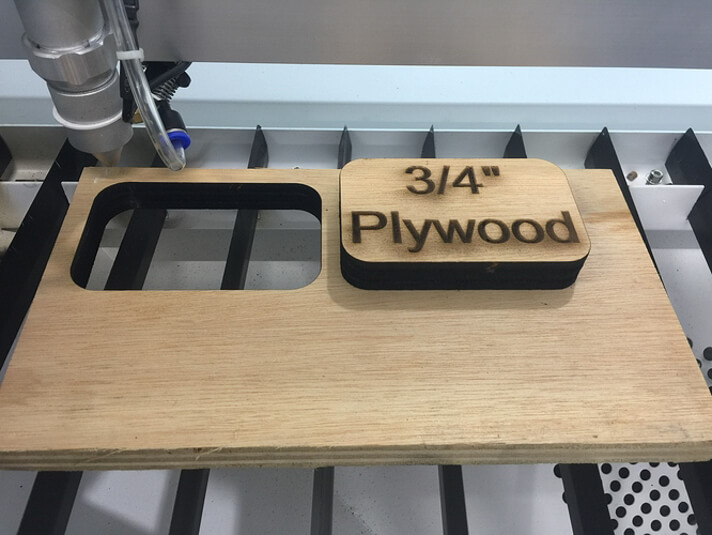
- English
- Español
- Português
- русский
- Français
- 日本語
- Deutsch
- tiếng Việt
- Italiano
- Nederlands
- ภาษาไทย
- Polski
- 한국어
- Svenska
- magyar
- Malay
- বাংলা ভাষার
- Dansk
- Suomi
- हिन्दी
- Pilipino
- Türkçe
- Gaeilge
- العربية
- Indonesia
- Norsk
- تمل
- český
- ελληνικά
- український
- Javanese
- فارسی
- தமிழ்
- తెలుగు
- नेपाली
- Burmese
- български
- ລາວ
- Latine
- Қазақша
- Euskal
- Azərbaycan
- Slovenský jazyk
- Македонски
- Lietuvos
- Eesti Keel
- Română
- Slovenski
- मराठी
- Srpski језик
How to avoid the blackening of laser cut plywood?
2023-05-26
Cutting wood with laser has the advantages of high precision, narrow slit, high speed and smooth cutting surface. However, due to the laser focused energy melting the wood, the blackening phenomenon, i.e. the cutting edge is carbonized, can occur during the cutting process. Today, SUNNA talks to you about how to reduce or even avoid this situation.
To avoid blackening, we usually choose to increase the cutting speed and reduce the laser power. Many customers think that faster cutting speed and lower laser power can reduce the blackening phenomenon. So they choose to make multiple cuts on the plywood at low power. This is not true and may lead to more blackening.
The faster the speed, the better, and the lower the power, the better, provided that you can cut through. Otherwise, the part that was cut will be burned twice. The more times you cut, the more serious the carbonization will be. Because the cut part will be burned a second time, the more you cut, the more serious the carbonization will be.
Therefore, we recommend cutting through at once and not doing secondary processing to avoid secondary damage.
Fast laser speed and low laser power are sometimes contradictory. In addition, the performance of different laser equipment is naturally different. So when laser cutting plywood, we can fix one of the parameters unchanged first, and then adjust the other one. And repeat this step several times until we find the most suitable parameters.
For example, we cut 3mm plywood with an 80W CO2 laser cutter at 55% laser power and 45mm/s. The cut edge did not turn black at all. When cutting 2mm plywood, we use 40% laser with 45mm/s speed. And the cut edges are also very good.




